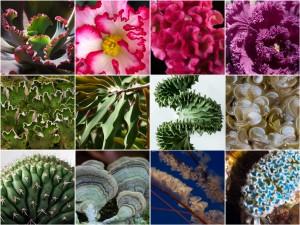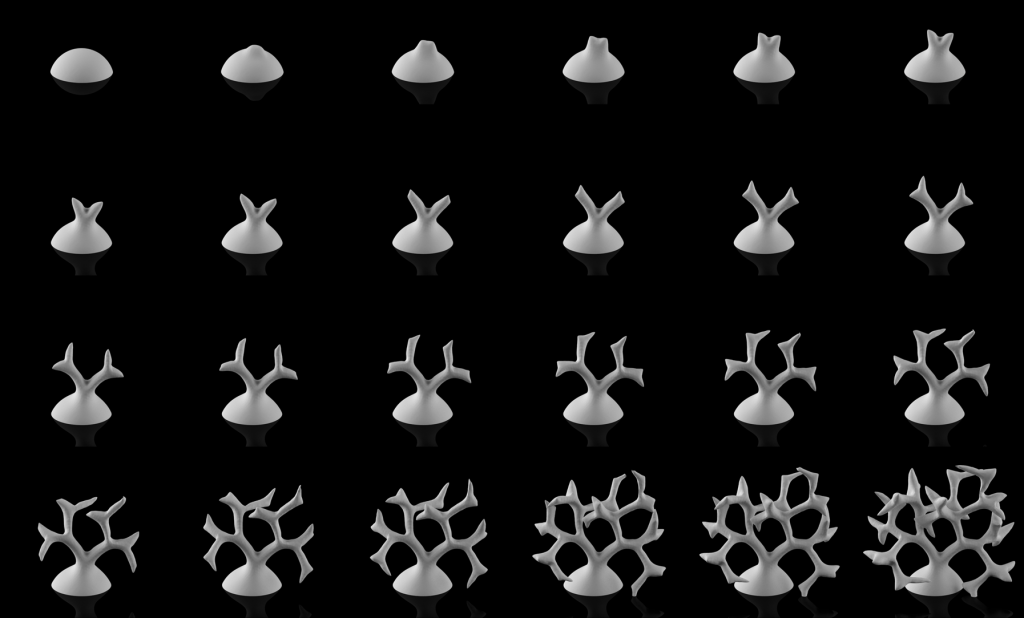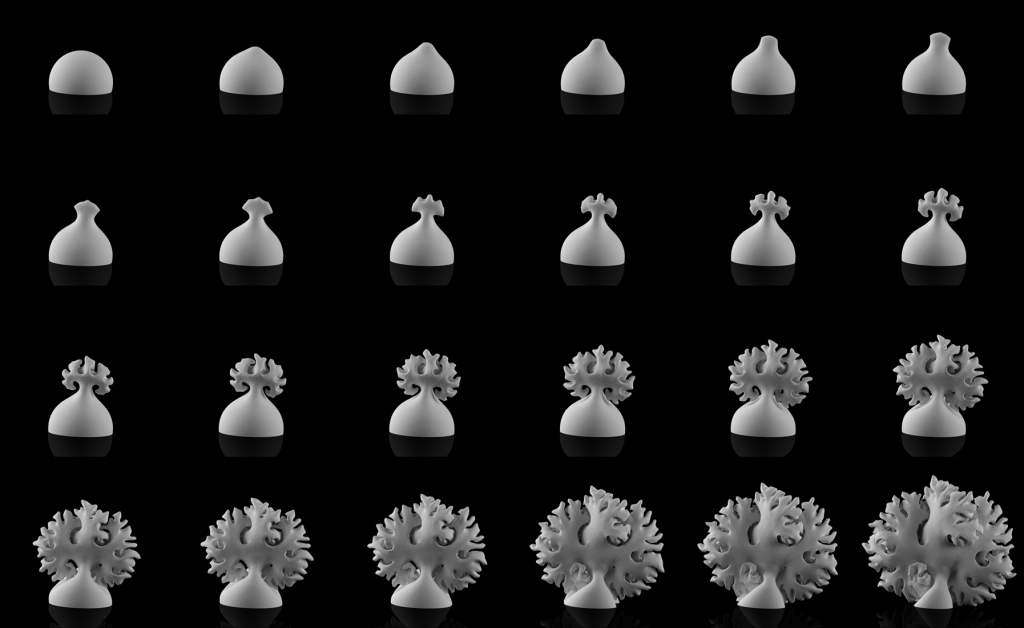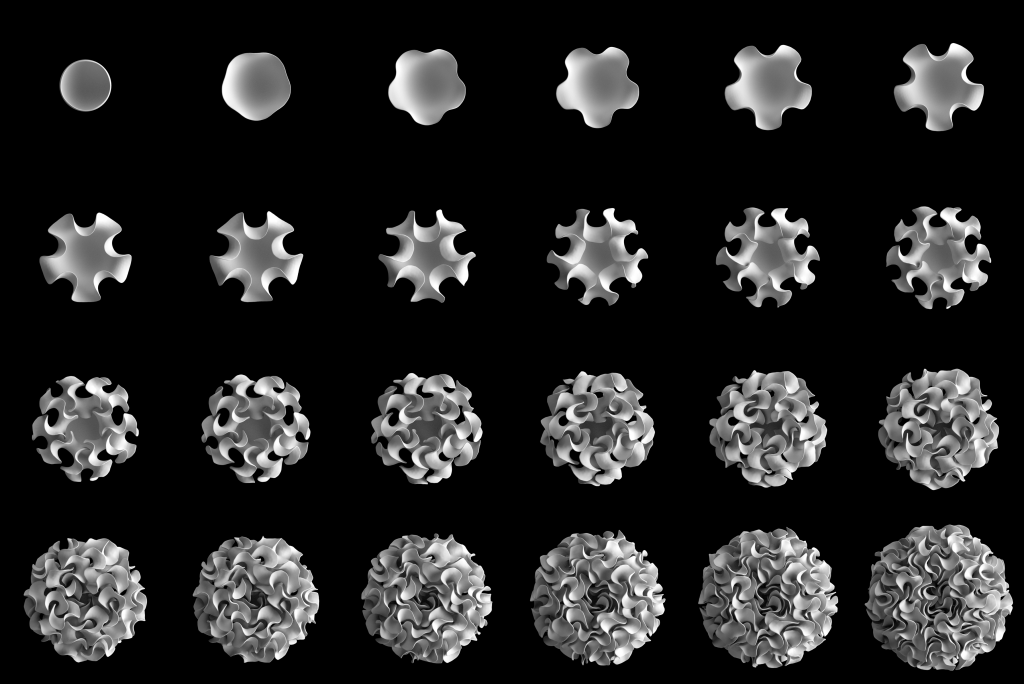 Creating man made objects that resemble something that would be grown in nature isn’t the easiest of tasks, even for the most skilled artist. The way that a flower blooms for instance, isn’t based on something that is really quantifiable or predictable, and is often dependent on entirely unrelated types of stimuli like wind, orientation of the sun, gravity and available sources of nutrients. When man tries to replicate nature, they generally find themselves creating a copy of what nature has already done. But it turns out that computers can do a pretty good job of replicating nature when given the correct algorithms and programming.
Creating man made objects that resemble something that would be grown in nature isn’t the easiest of tasks, even for the most skilled artist. The way that a flower blooms for instance, isn’t based on something that is really quantifiable or predictable, and is often dependent on entirely unrelated types of stimuli like wind, orientation of the sun, gravity and available sources of nutrients. When man tries to replicate nature, they generally find themselves creating a copy of what nature has already done. But it turns out that computers can do a pretty good job of replicating nature when given the correct algorithms and programming.
A unique design studio called Nervous System specializes in auto generative design methods using a combination of algorithmic and physical tools to create unique and striking objects with complex and unconventional geometries. Their latest generative design system is called Floraform, which is inspired by the biomechanics of simple life forms, growing plants and the blooming of flowers. The process exploits the unique development and evolution of surfaces created by organic, differential growth. Floraform explores how nature creates specific forms, shapes and patterns by alternating the rate of growth in different areas of the growing surface. It was inspired by beautiful works of nature like the Celosia cristata flower and kleptoplastic sea slugs. The result is a line of jewelry completely generated or “grown” using an algorithm that simulates natural growth.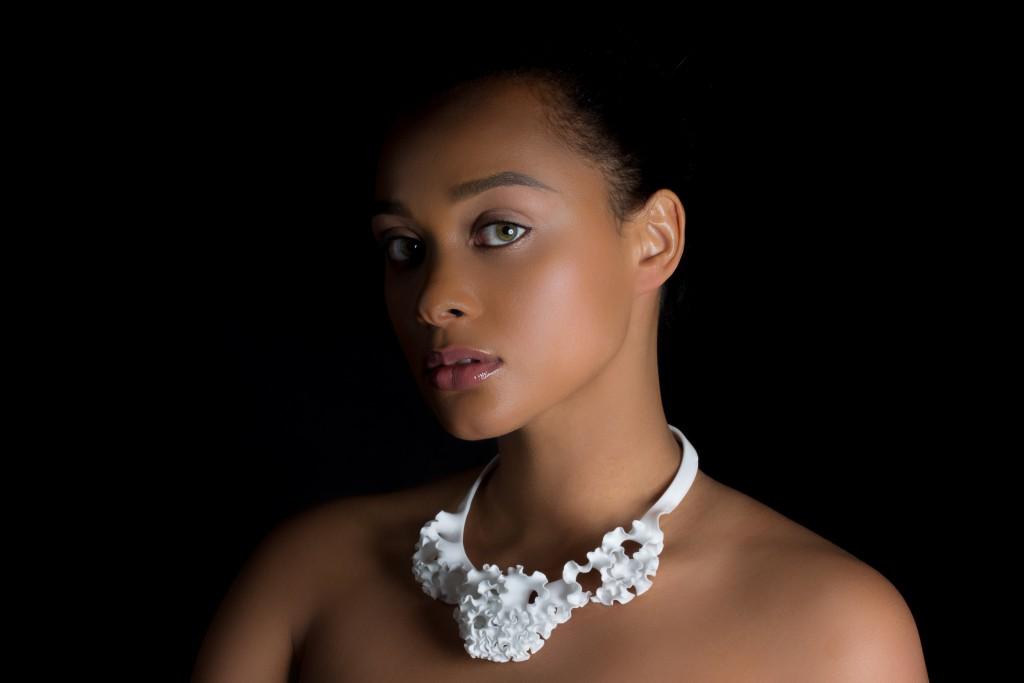
The key to Floraform is mastering the mechanics of differential growth, a biological process that all life forms share to some degree. The process of differential growth allows the surface of cells to grow and expand only in certain areas, which will eventually create a specific shape or pattern. Essentially, it is a process of carefully coordinated subdivision and differentiation on a cellular level that allows life to form itself into specific, pre-determined shapes rather than creating a large blob of cells all identical to each other.
For Floraform, the designers at Nervous System specifically focused on the type of differential growth shown by the flower called Cockscomb that blooms with a dense, convoluted mass of petals that almost resemble brain matter. Nervous System believed that they could accurately simulate the growth of a Cockscomb bloom using an algorithm that would focus preferential growth toward the edge of a growing surface while restricting it everywhere else. Floraform uses three different types of differential growth combined in multiple ways, with a specific number of external forces that alter the final bloom.
The first type of differential growth is point-based or tip splitting. The growing area is a single point, similar to the growing tip of a typical stem on a plant. It grows at a single, fixed point and randomly splits itself off. At this point, each stem acts independently and repeats the same behavior.
The second type of differential growth is called line-based or fasciated growth. The growth area begins in a single point, but rather than splitting into two independent stems the points remain connected. Certain types of cacti grow using this method of differential growth.
The third type of differential growth is edge-based growth. Rather than growing up, or fanning out, the expansion of the bloom is focused almost entirely on a specific edge. This creates a tangle of growth material that bunches together or ripples and twists. This type of differential growth was the inspiration for Floraform and the primary method used to grow their stunning line of jewelry.
Here is a video explaining in detail how the Floraform process works and what types of external stimuli can alter the growing process:
And here is a short video explaining the mechanics of differential growth within Floraform:
Nervous System first used Floraform to produce a series of sculptures produced for their “Growing Objects” exhibition that was showcased at Stonybrook University. For the line of Floraform jewelry, each piece was grown using a unique algorithm to produce the organic shapes. The jewelry used the human body as an environmental constraint, so every piece that grew would keep in mind the finger, arm or neck that it would need to fit. This aided in making it look like the individual pieces of jewelry were actually grown around the body of the person wearing them, almost like a vine growing around a pole.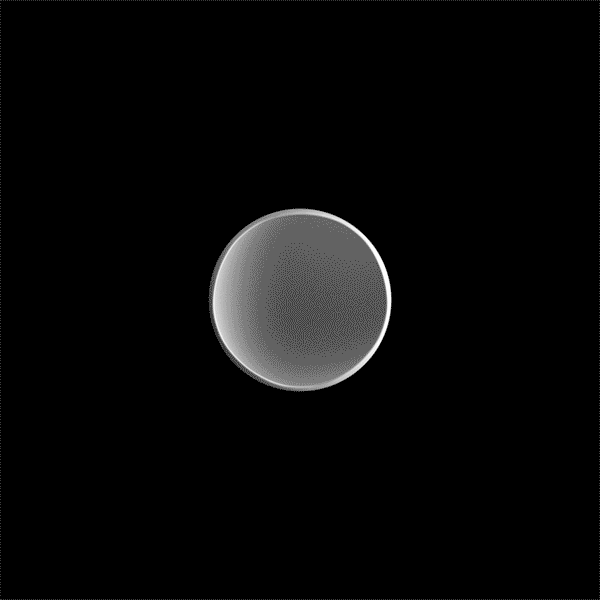
The first line of Floraform jewelry consists of 24 different designs that can be produced in either 3D-printed nylon or sterling silver. Half of the collection is inspired by the growth of flowers and petals, creating delicate curls and ruffles that intentionally lack symmetry. The rest of the collection was inspired by the arms and tentacles of certain varieties of jellyfish, which results in elongated, draping forms enhanced by waves of frilly ruffles.
Currently the only Floraform jewelry available is being sold directly by Nervous System, however they are currently developing a cloud-based version that would allow users to digitally grow and cultivate their own virtual Floraform gardens. Presumably this could be used to create custom shapes and designs that could then be 3D printed. All of the nylon jewelry pieces are 3D printed using selective laser sintering (SLS) in a variety of colors like white, petal pink, or black. The pieces made from precious metals are 3D printed in high-detailed wax and then cast in sterling silver using a lost wax casting method.
 The entire process involved in creating Floraform is quite fascinating, and I’ve only managed to scratch the surface of Nervous Systems’ developmental process, so you can read more about it over on the Nervous System website. And you can tell us what you think of this types of digital gardening Floraform forum thread on 3DPB.com.
The entire process involved in creating Floraform is quite fascinating, and I’ve only managed to scratch the surface of Nervous Systems’ developmental process, so you can read more about it over on the Nervous System website. And you can tell us what you think of this types of digital gardening Floraform forum thread on 3DPB.com.
Subscribe to Our Email Newsletter
Stay up-to-date on all the latest news from the 3D printing industry and receive information and offers from third party vendors.
You May Also Like
3D Printing Unpeeled: New Arkema Material for HP, Saddle and Macro MEMS
A new Arkema material for MJF is said to reduce costs per part by up to 25% and have an 85% reusability ratio. HP 3D HR PA 12 S has been...
3D Printing News Briefs, January 20, 2024: FDM, LPBF, Underwater 3D Printer, Racing, & More
We’re starting off with a process certification in today’s 3D Printing News Briefs, and then moving on to research about solute trapping, laser powder bed fusion, and then moving on...
3D Printing Webinar and Event Roundup: December 3, 2023
We’ve got plenty of events and webinars coming up for you this week! Quickparts is having a Manufacturing Roadshow, America Makes is holding a Member Town Hall, Stratafest makes two...
Formnext 2023 Day Three: Slam Dunk
I’m high—high on trade show. I’ve met numerous new faces and reconnected with old friends, creating an absolutely wonderful atmosphere. The excitement is palpable over several emerging developments. The high...


